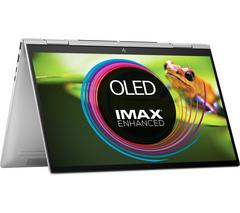Computer Monitors Buyer's Guide
 Computer Monitors
Computer Monitors
Monitors range from 19 inches to 30 inches or more and come in standard and widescreen formats. LED and LCD screens are very thin and light, ideal for offices where space is at a premium, the old stlye CRT displays needed a pretty significant body to house the inner workings, but are now out of fashion
Thin LCD or LED monitors are also well suited for multiple monitor set-ups. These are great if you have to run a number of applications or files at once and need to be able to see everything. Your PC's video card will have to be able to use multiple monitors for this to work.
So it’s really up to you if you decide to purchase 2 smaller flat screen monitors, say 2 x 19” monitors which may work out to be the same price as buying one 24” monitor. If you just want one monitor, then buy as large a monitor as you can afford.
Resolution
'Resolution' refers to the total number of pixels. The higher the resolution, the clearer the image. So you want to purchase computer monitor with the highest resolution in pixels. This also means that you can make your computer desktop appear larger by shrinking the size of the screen by making text and images smaller on screen.
Remember though that your graphics card also dictates the maximum possible resolution rate that is possible, so if your monitor can go to a very high resolution rate your graphics card cannot, then you may need to settle with what your graphics card can cope with or also upgrade your computers graphics card.
Response Rate
'Response rate' means the speed with which the picture changes. Basically the lower the response rate the better, especially if you're into movies and gaming where picture quality really matters..
Some monitors will quote a response rate of as low as 2ms, but really a monitor with anything around 5ms will be fine.
Contrast Ratio
'Contrast ratio'. This refers to the difference in light intensity between the brightest white and the deepest black. The higher this ratio, the deeper the depth of shades. Also look out for monitors with BrightView technology. These offer an even clearer, brighter picture than conventional monitors.
Inputs and Outputs
Many monitors have a choice of either digital or analog inputs. These come in handy when you want to connect other equipment, like game systems, or watch video on your computer. Digital connections like DVI can carry more data than analog.
Remember that LED and LCD monitors are digital devices, so an analog input would require converting the digital signal from the computer or other source into analog, then back.
So it is always better to purchase a monitor with an HDMI and DVI input, the DVI cable you require for this usually comes in the box with the computer monitor, but you may need to purchase an HDMI cable separately.
Another great thing about using the HDMI or DVI socket is that the computer can adjust the sizing of the screen automatically, there is no longer a need to play with the width and height settings on the monitor itself.
Warranty
The great thing about computer monitors compared to a lot of LED and LCD TVs is that they are all normally guaranteed for up to 3 years.
This means that if anything goes wrong with your computer monitor within the warranty period you can telephone the manufacturer and they will send out a new monitor to you in exchange for your old one.
View our range of Computer Monitors
All reviews and buyers guides are © copyright FindElectricals.co.uk and cannot be published or used by other people without express written permission


